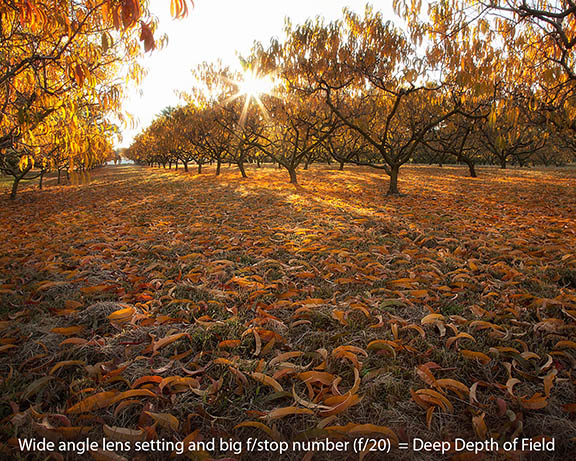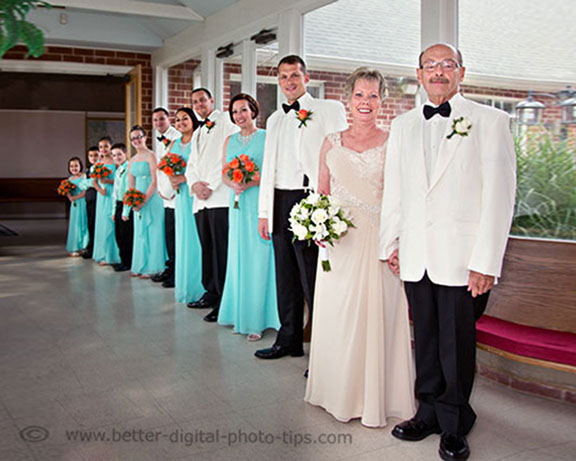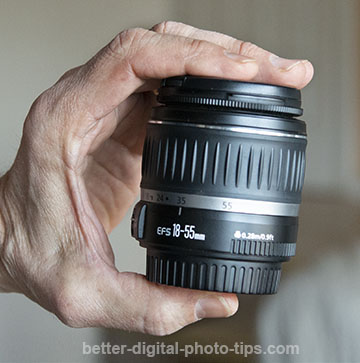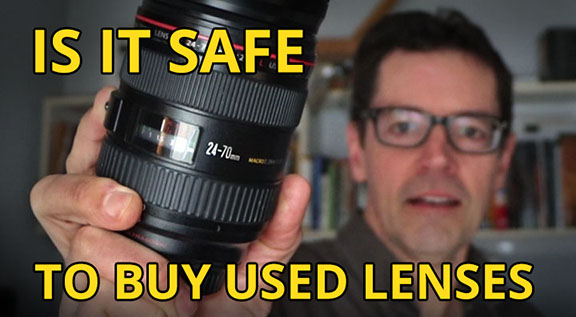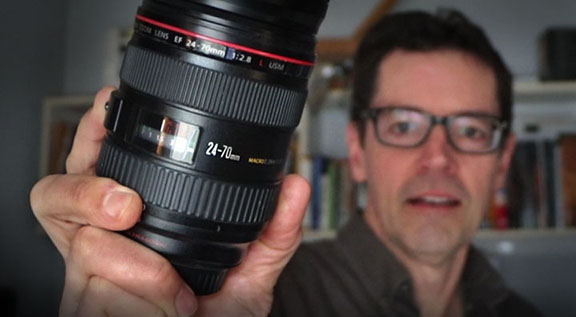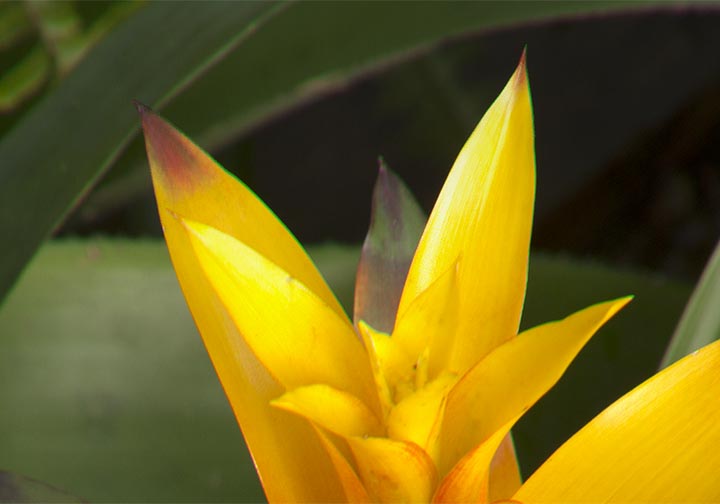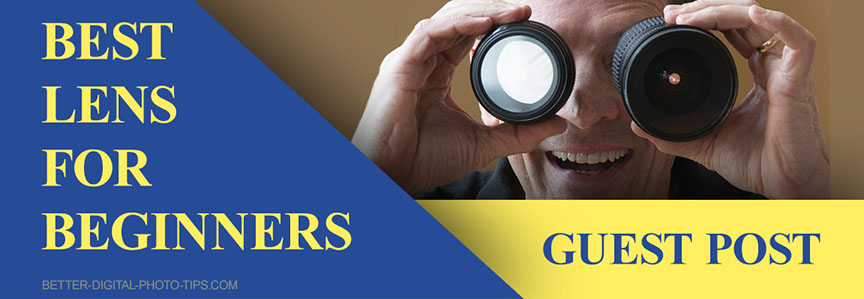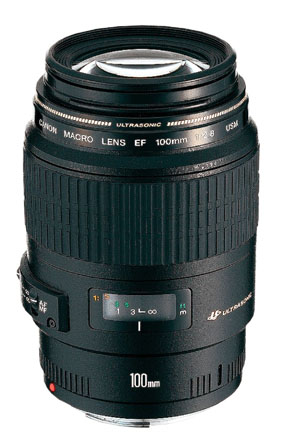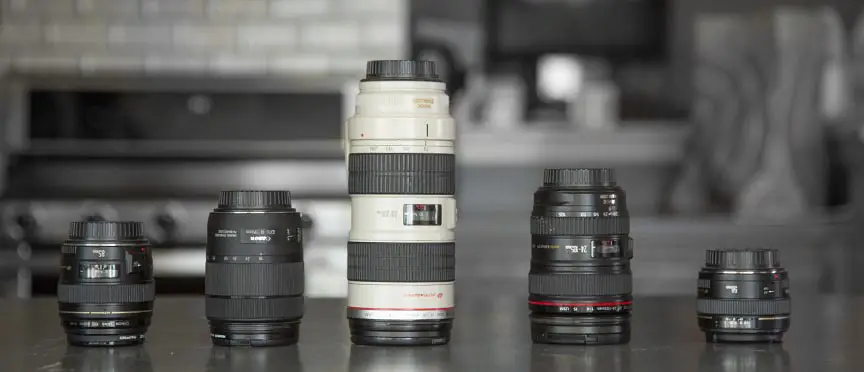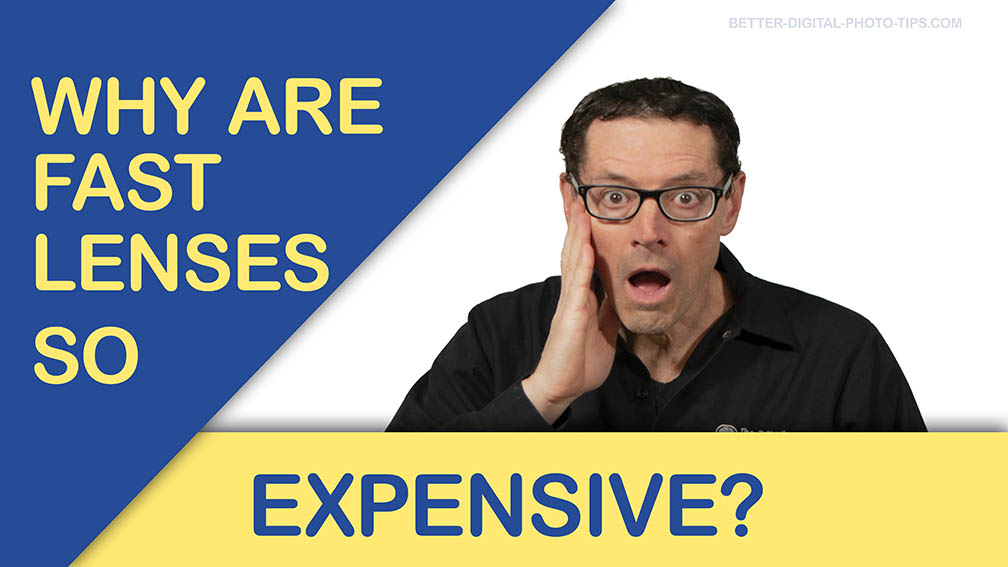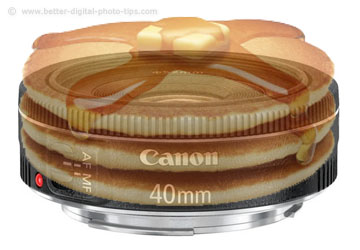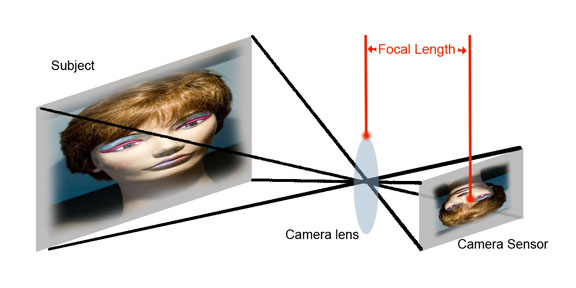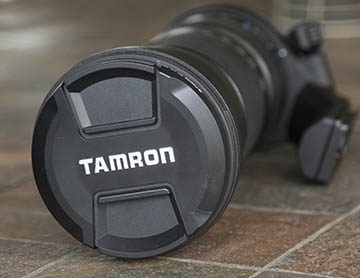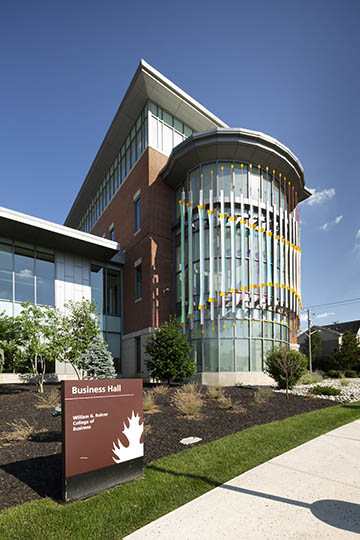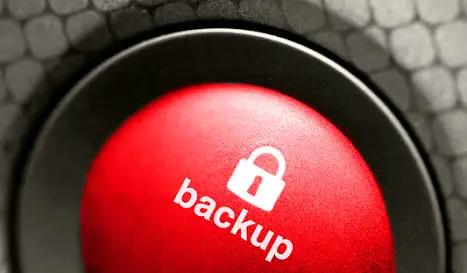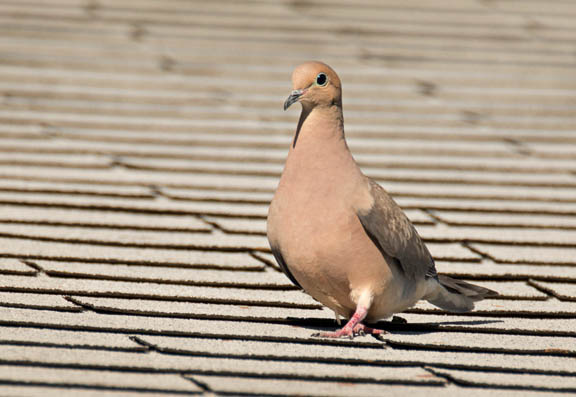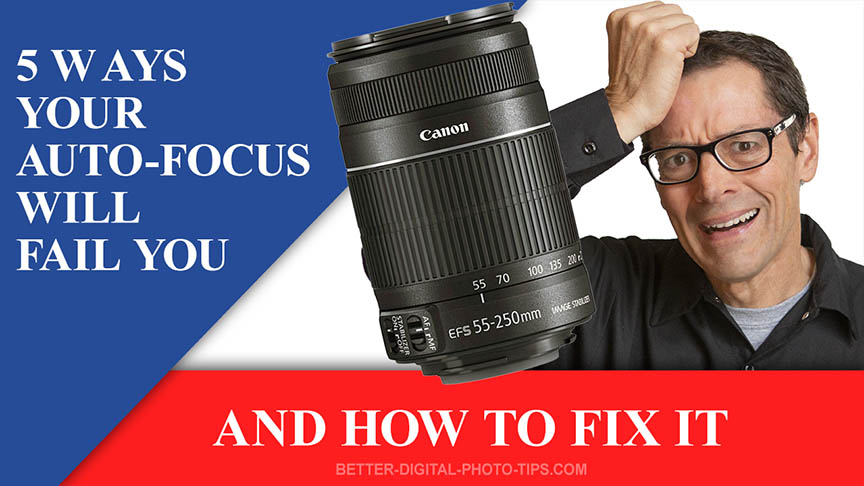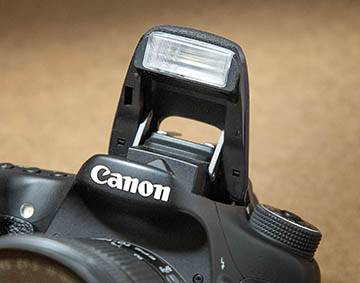HOW TO POSTS: LIGHTING AND COMPOSITION
What Is a Wide Angle Lens For?
(How to Use One, and The Pros and Cons)
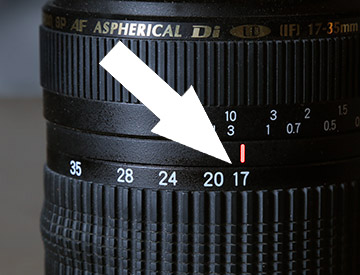 Camera Zoom lens
Camera Zoom lensset at widest angle
Digital camera wide angle lenses. Do you need one? This post will give you a simple explanation, the pros and cons of using one, and answers to several other questions about using wide angle lenses.
First of all, what is a wide angle lens and what's it used for?
Simply put, a wide angle lens gives you a view of your subject that is wide so that you can compose your photo to include a wider view of the subject in front of you.
Wide angle lenses are shorter than normal and telephoto lenses. They are designated with a smaller focal length number. Take a second to look at the diagram below showing wide angle and telephoto angles of view.
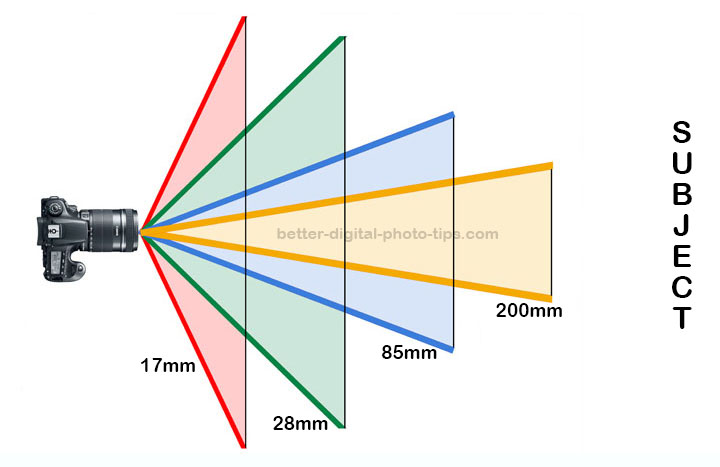 Red lines show a super wide angle of view.
Red lines show a super wide angle of view.Green lines show a wide angle of view.
Blue lines show a moderate telephoto angle of view.
Yellow lines show a very narrow telephoto angle of view.
These 4 different lens focal length numbers show you how the angle of view is widest with the shortest focal lengths and it's more narrow with the longer (telephoto) focal lengths. You can get wide angle lenses that zoom or you can use a non-zooming prime wide angle lens too.
what wide angle lenses are good for
You may want to know why you would want to use a wide angle lens, what they're good for. Here are 3 specific types of photography where these types of lenses are good to use.
LANDSCAPES. Wide angle lenses are by far the most popular go to lens for shooting landscapes. Most landscape subjects include a large area with several elements that you want to keep within your composition. The wide angle of view built into a wide angle lens is perfect for these types of photos
PORTRAITS. There are two very different uses of wide angle lenses when photographing people. When your shooting large groups of people wide angle lenses enable you to fit everybody into the frame. Secondly, wide angle lenses give you the ability to exaggerate (distort in a creative way) specific aspects of your subject.
INTERIORS and EXTERIORS. Architectural and real estate photographers need wide angle lenses to photograph both small rooms inside buildings and shoot large exterior photos of buildings outside.
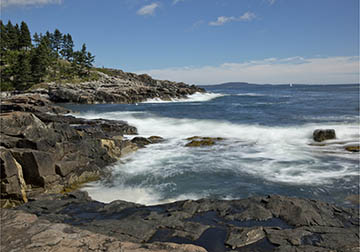 Landscapes
Landscapes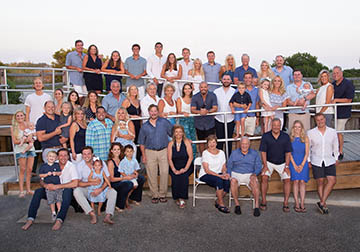 Large Family Portraits
Large Family Portraits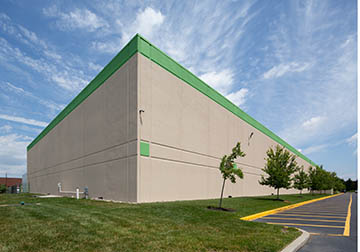 Architecture
ArchitectureThe 2 creative reasons to use wide angle lenses
In addition to the 3 types of photography that lend themselves well to using a wide angle lens, there are two creative reasons that are perhaps even more important for you to know about.
1. DISTORTION
Distortion from using a wide angle lens comes in 2 forms, the good and the bad. Cheaper wide angle lenses can produce bad lens distortion called like barrel distortion. We'll discuss barrel distortion in a minute. First let's look out how you can use wide angle lens distortion to your advantage.
A. creative wide angle distortion
Wider lenses can give you an exaggerated perspective. This is really a great tool to get creative with.
When using a wide angle lens objects that are close to the camera appear unusually big.
Look at the relative size of the woman's legs in the different photos of the statue on the park bench.
Both photos were taken with the lens set at its widest setting, 24mm.
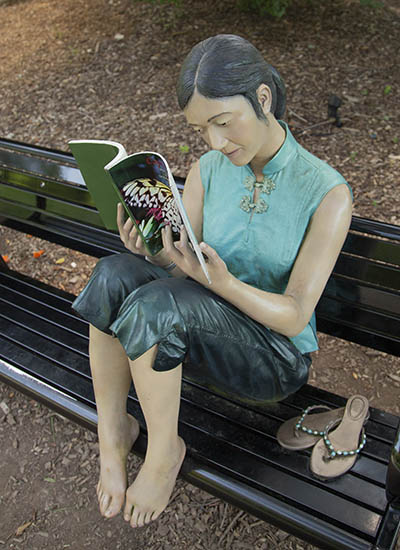 Head, book, and legs are just about all equally distant from the lens.
Head, book, and legs are just about all equally distant from the lens.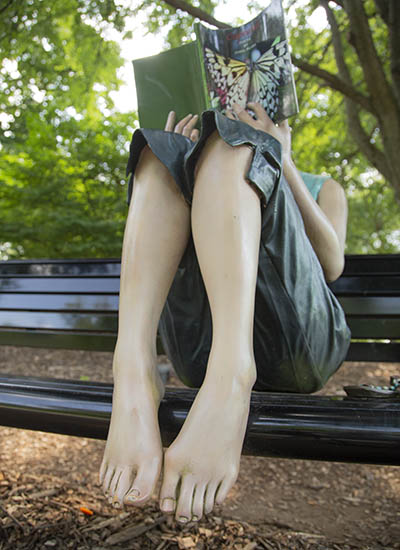 Here, the legs are closer to the lens and appear much larger.
Here, the legs are closer to the lens and appear much larger.Here's another example of using a wide angle lens to emphasize a specific part of your subject.
In this case look how big the puppy's head appears. Perhaps this is a bit of a strange look, but with a subject this cute, it's hard to criticize the shot.
A super wide angle lens positioned close to his head created this adorable perspective of this 8 week old beagle.
B. bad lens distortion from wide angle lenses
One of the questions that oftens comes up when people are learning about wide angle lenses is if a wide angle lens will distort the picture. Lens manufacturers do their best to minimize the distortions, but there are sometimes significant distortions, depending on several factors.
Distortions like these are much more prevalent in cheaper, zooming wide angle lenses than they are with professional prime wide angle lenses.
|
When straight lines are curved inwards in a shape of a barrel, this type of aberration is called “barrel distortion” 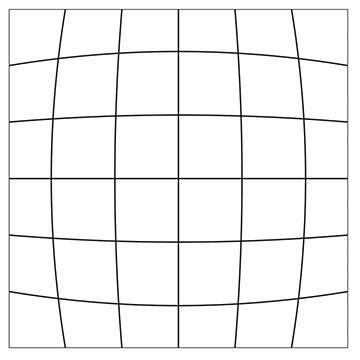 Wide angle lens "Barrel" distortion. Wide angle lens "Barrel" distortion. |
Telephoto lenses can often have the opposite distortion, called pincushion distortion where the lines curve outwards 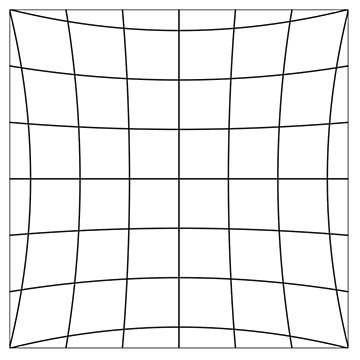 Telephoto lens "Pincushion" distortion Telephoto lens "Pincushion" distortion |
2. Depth of field
A great benefit to using a wide angle lens is the range of close and far objects that stay in sharp focus. You probably already know that is referred to as depth of field. Wide angle lenses enhance your ability to get deep depth of field.
In this photo of the peach orchard I had my lens zoomed out to 24mm, its widest setting. That, plus a small aperture gave me a super deep depth of field to make everything close and far away in sharp focus.
In the wedding photo, the bride and groom are much closer to the camera than the ring bearer and flower girl at the opposite end of this pose. Everyone is in sharp focus because a wide angle lens setting was used.
pros and cons of using wide angle lenses
Here's a quick look at 3 advantages and 3 disadvantages of using a wide angle lens on your camera.
wide angle pros
- You get increased depth of field. It's easier to have everything both close and far away from you to be in sharp focus.
- You can shoot in smaller areas and still included everything you want in your composition.
- Including interesting objects in the foreground can add visual depth to your photos. it gives the viewers eyes a path to follow when they look at your image. Wide angle lenses make it possible to do so.
wide angle cons
- It's very challenging to get great bokeh when using a wide angle lens. Sometimes you want the background behind your subject to be blurry so that your subject stands out better.
- Street photography is often done without your subjects knowing they're being photographed. To compose your photograph without them being too small in the photo, you'd have to get close to them with a wide angle lens. That could take away the secrecy.
- Wide angle lens can be expensive, especially if you get a "fast" lens with a large maximum aperture.
how to use a wide angle lens
Some bloggers feel that wide angle lenses are the toughest to learn how to use properly. I'm not so sure, but to help you out, here are 4 mistakes to avoid a 3 tips to succeed with a wide angle lens.
common wide angle lens mistakes
Not having a main subject. What can happen with a wide angle lens is that you fail to have a dominant subject in your photo. Compositions without a single subject often have too much clutter.
Distortion. This is an interesting one because wide angle lenses do distort subjects. Pay attention to whether the distortion is adding to the effect you want or is it making your subject appear in an unattractive way.
Crooked horizon. Wide angle lenses often include a large amount of horizon and any tilt is exaggerated. Keep it level unless you're really trying for some sort of creative effect on purpose.
Watch the edges. When you're shooting wide you'll naturally pay attention to the center of your composition, but to neglect the edges. Objects that touch the edge of your photo become tension points and can be distracting.
tips to use when shooting wide angle
Here are 3 tips for shooting with a wide angle lens. The video below these tips, from my friends over at Adorama, does a great job of explaining them.
- Compose so that you have a dominant subject. Find a distance and an angle that emphasizes something in your photo.
- Get close. That's how you avoid the clutter and have a main subject.
- Include leading lines.
Keep your passion for learning photography!


ABOUT BRUCE LOVELACE
Bruce is the publisher of this website. He is the author of the book "Improve Your Photography Instantly." Read more on Bruce on his Bio Page. He's been known as The Traveling Photographer ever since 1994. Read more about this website.
View some of Bruce's photos on Instagram. Visit the Facebook Page. Watch him on YouTube. Bruce runs photo workshops for kids and adults, and provides one-on-one photography coaching.
Digital Photography Education Location on Google My Business

